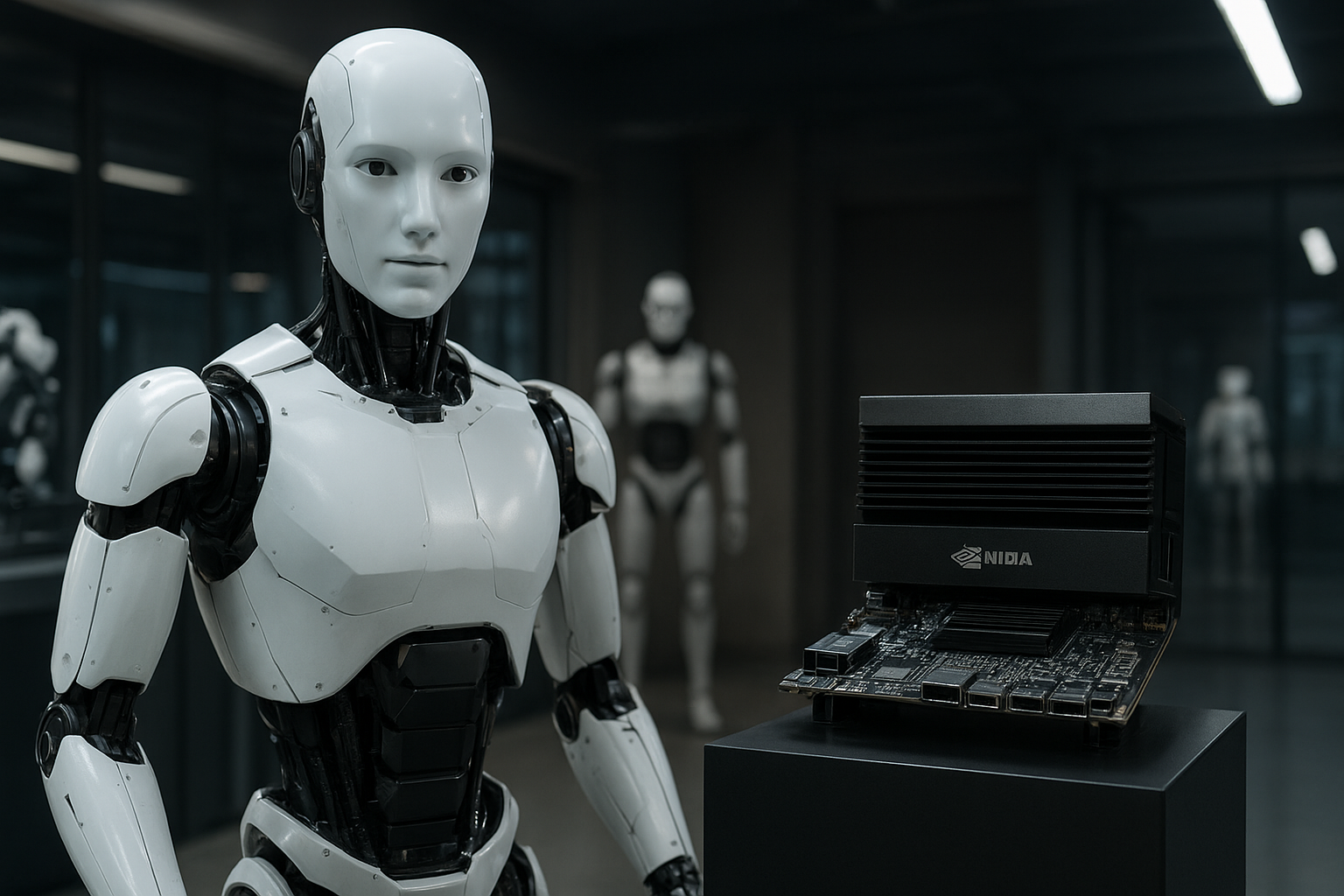In a bold step forward, Nvidia’s Jetson Thor robotics platform is capturing the attention of industry leaders like Amazon and Meta. The rollout of the Jetson AGX Thor developer kit and production modules.
Powered by the Blackwell GPU, marks a new era where humanoids, autonomous robots, and AI driven machines gain unprecedented efficiency and intelligence.
This move not only reinforces Nvidia’s dominance in AI but also highlights how big tech is betting on robotics to transform industries.
The Nvidia Jetson Thor robotics platform is more than a product launch it’s a statement of intent. Designed with Blackwell GPU technology, the platform offers unmatched performance for AI powered robotics.
Nvidia claims it can handle massive computational loads while maintaining energy efficiency, making it ideal for large scale deployment.
The Blackwell GPU provides real time AI inference for robotics, enabling machines to learn and adapt in dynamic environments.
From small drones to full scale humanoid robots, Jetson Thor supports a wide range of applications. Power to performance ratios ensure robots can operate longer with lower energy costs, a critical factor for businesses aiming at sustainable automation.
Industry watchers note that Nvidia’s vision extends beyond robotics it is creating an AI foundation for smart infrastructure, manufacturing, healthcare, and logistics.
Amazon’s Logistics Revolution
Amazon has long been a pioneer in robotics, from its Kiva robots in warehouses to automated delivery drones. By adopting the Nvidia Jetson Thor robotics platform, Amazon is taking automation to the next level.
Imagine robots capable of understanding human gestures, predicting demand surges, and autonomously reorganizing inventory.
Jetson Thor powered drones could manage real time route optimization, weather adaptation, and safety protocols with enhanced AI decision making.
A former Amazon robotics engineer noted, The bottleneck in robotics has always been computational efficiency. Nvidia’s Thor could cut latency in half, opening doors for smoother human robot collaboration.
This suggests that Amazon isn’t just automating tasks it’s aiming for intelligent, adaptive systems that work side by side with human workers.
Meta’s Bet on Humanoids
Meta’s interest in robotics ties directly to its metaverse ambitions. By adopting Jetson Thor, Meta could accelerate humanoid development for both physical and digital interactions.
Meta envisions robots that can mimic human body language, making remote collaboration more immersive. Robotics could serve as physical avatars, blending real world AI with virtual environments.
A robotics researcher at Stanford University shared, Meta isn’t just investing in robots it’s experimenting with social AI. Nvidia’s Thor could provide the neural backbone for humanoids that understand emotional cues and social dynamics.
This reflects a future where robotics isn’t only about productivity but also about bridging human experiences in both real and virtual spaces.
Industry analysts believe that Nvidia’s dominance is no accident. The Jetson Thor platform is part of its broader ecosystem strategy, connecting robotics to its GB200 superchips and Blackwell architecture.
Goldman Sachs recently highlighted that Nvidia’s robotics push will complement its data center growth, creating synergies across industries.
Dr. Michael Chen, AI Robotics Professor, noted, The real innovation isn’t just hardware speed it’s Nvidia’s ability to create an ecosystem where software, AI models, and hardware converge seamlessly.
This perspective explains why early adopters like Amazon and Meta are confident in Nvidia’s long term roadmap.
A Robotics Engineer’s Take
I recently spoke with a robotics engineer who had early access to Nvidia’s developer kits. His account highlights the human side of innovation. When I tested Jetson Thor, what stood out wasn’t just raw power but how intuitive the development environment felt.
We could deploy reinforcement learning models in hours rather than weeks. For someone working on humanoids, that’s game changing. It’s the difference between an experiment and a real world solution.
This testimony underscores the platform’s accessibility, empowering engineers to focus on creativity rather than troubleshooting computational limits.
The adoption of Nvidia’s Jetson Thor robotics platform signals three major shifts. The Rise of Humanoids Robotics is no longer limited to warehouses. With Thor, humanoids capable of real time decision making will enter healthcare, education, and even households.
AI and Robotics Convergence Thor exemplifies how AI isn’t just about chatbots or cloud computing it’s about embedding intelligence directly into machines.
Economic Transformation With Amazon and Meta leading the charge, other industries from logistics to entertainment will likely follow, creating trillion dollar opportunities.
However, challenges remain regulatory hurdles, safety concerns, and workforce displacement debates are intensifying. Yet, Nvidia’s move positions it at the heart of these discussions, shaping the ethical and economic future of robotics.
The Robotics Renaissance
The early adoption of Nvidia’s Jetson Thor robotics platform by Amazon and Meta is more than corporate news it’s a glimpse into the robotics renaissance.
These developments suggest a future where humanoids walk factory floors, drones deliver packages autonomously, and AI powered machines collaborate with humans in ways we once imagined only in science fiction.
Nvidia’s integration of Blackwell GPUs, coupled with its ecosystem approach, makes it not just a supplier but a shaper of the robotics future. As case studies from Amazon and Meta show, we are moving from automation to intelligence, from tools to partners.
In the words of one industry insider, We’re not just building robots anymore. We’re building the future of work, society, and human interaction. And at the center of it all is Nvidia turning that future into reality.

